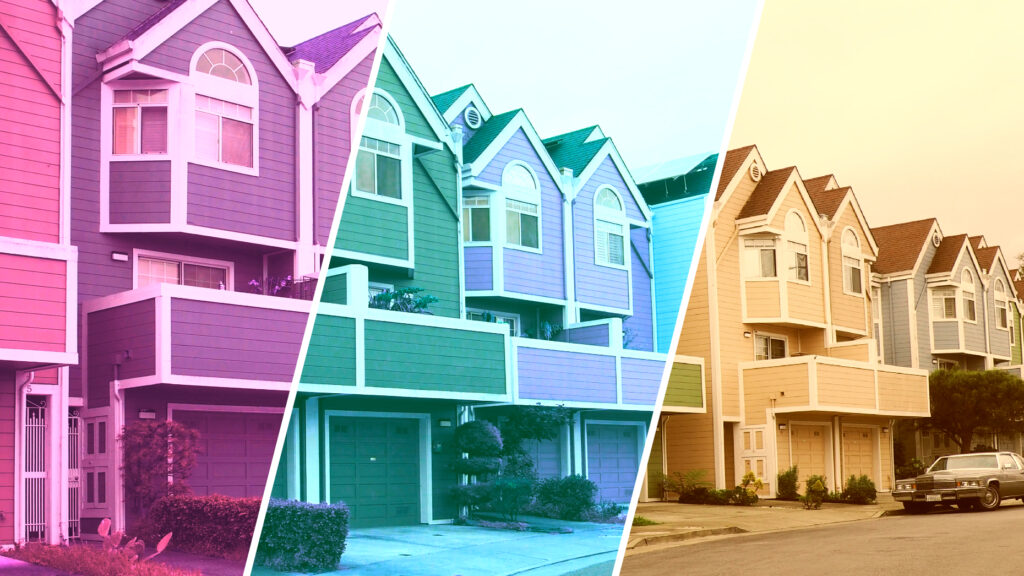In a shifting real estate market, the guidance and expertise that Inman imparts are never more valuable. Whether at our events, or with our daily news coverage and how-to journalism, we’re here to help you build your business, adopt the right tools — and make money. Join us in person in Las Vegas at Connect, and utilize your Select subscription for all the information you need to make the right decisions. When the waters get choppy, trust Inman to help you navigate.
Earlier this month, U.K. Prime Minister Boris Johnson floated a novel idea to help more people buy homes: offer 50-year mortgages.
More novel still: The mortgages could theoretically be passed down from one generation to the next.
The idea quickly prompted criticism on social media, with observers calling it “half-baked” and an attempt to “reinstate feudalism.”
But the merits of the specific plan aside, Johnson was trying to solve real problems. Homes are expensive and many people have a hard time paying for them. Stretch out the payments the logic goes, and more people might be able to afford housing.
“We want to find all sorts of creative ways to help people into ownership,” Johnson said during a NATO summit according to Bloomberg. “We need young people to have the confidence, to have the deposits, the mortgage packages to be able to get into ownership.”
The idea is merely a proposal at this point, and it’s a proposal limited to the U.K. But some of the same issues, such as expensive houses and consumers lacking the ability to pay are also at play in the U.S. Those factors have occasionally prompted debates about whether the U.S. should allow 40-year mortgages, which aren’t as long as Johnson’s idea but nevertheless still diverge from the typical 30-year loan most Americans get today.
All of which begs the question: Could ultra-long mortgages such as the one Johnson is floating become a thing in the U.S.?
Inman reached out to several lending experts to find out. By and large the answer was that for a variety of reasons, very long mortgage terms are unlikely to become the norm in the U.S. But more intriguingly, the experts also said such loans would likely not have the equalizing impact on housing that some might hope. In fact, they might even make houses more expensive.
Very long mortgages are unlikely to become a big thing in the U.S.
One of the main obstacles that stands between American consumers and longer mortgages is a set of regulations that emerged after the financial crisis of 2008. Eric Stein, senior vice president at the Center for Responsible Lending, told Inman that in the run-up to the housing bubble there were products known as “affordability mortgages.”
Such mortgages might have interest rates that spiked after the first few years, and in other cases they had terms that were longer than 30 years. Lenders at the time were also under little obligation to ensure consumers could actually afford the houses they were buying.
Of course, everyone knows how that turned out.
Eric Stein
“We had basically a disaster of people in mortgages they couldn’t afford,” Stein said.
In response, lawmakers passed the Dodd-Frank Act, which created a bunch of new rules and regulations for the lending industry. And one of the specific things to emerge from that law was something known as a “Qualified Mortgage.” Among other things, Qualified Mortgages protect lenders from lawsuits in the event that borrowers can’t make their payments. And now, when it comes to loans “the vast majority today are Qualified Mortgages,” Stein said.
“What makes a loan a Qualified Mortgage is it’s fully amortizing,” Stein further explained, adding that Qualified Mortgages also have other requirements, such as limits on fees. “The idea was that this is going to be the safest loan we can think of.”
So what does this have to do with extra-long mortgage terms?
Stein said that yet another feature of Qualified Mortgages is they can’t run longer than 30 years.
Regulators could change that rule, but so far they haven’t. And that has a variety of implications.

Laurie Goodman
Laurie Goodman, a fellow at the Urban Institute who focuses on housing policy, told Inman that one result of today’s regulatory landscape is that longer-term loans can’t easily move through the financial system.
“You could go create a 40-year mortgage, but no one would buy it,” Goodman said. “The whole mortgage system is dependent on the 30-year mortgage market.”
In other words, lenders today are willing to take on the risk of making loans to homebuyers because they know they can sell those loans to downstream investors, as well as government-sponsored enterprises such as Fannie Mae and Freddie Mac. But longer loans can’t get “qualified” status, which means they can’t enter that secondary mortgage marketplace. And that, in turn, would also make them riskier for the lenders.
As a result, both Goodman and Stein believe 40-year mortgages, or even longer terms such as the one proposed in the U.K., as unlikely to catch on in the U.S.
“It’s unlikely to be mass marketed,” Stein said.
Longer mortgages do exist in limited circumstances
All of that said, there are currently some instances where longer loans do exist. Stein pointed, for example, to mortgage modification cases in which someone’s circumstances change and they can no longer afford their payments. In such cases, lenders can extend the terms of a loan beyond 30 years in order to avoid a foreclosure.
Earlier this year, the Department of Housing and Urban Development solicited input on this very topic. The idea drew support from an array of industry members. The National Association of Realtors, for instance, argued in favor of letting modified loans go to 40 years because it’s worth being “flexible to accommodate borrowers with unique circumstances.” A number of other housing organizations including Stein’s also signed a letter describing the proposal “as a necessary means to provide payment relief to borrowers.”
But Stein doesn’t see longer mortgages growing beyond such special “niche” cases.
Why long mortgages may not be such a great thing anyway
While regulations are a major obstacle to longer mortgages in the U.S., the experts who spoke to Inman argued that such loans probably wouldn’t be particularly helpful anyway.

Polina Ryshakov
Polina Ryshakov, lead economist for distressed property marketplace startup Sundae, told Inman that the point of longer mortgages would be to lower the monthly payments for people who can’t afford 30-year loans. But those lower payments would likely induce new demand for housing, and suddenly “everybody would rush in” and try to buy property.
“That would just drive the prices further up,” she continued, and soon the affordability gains could be all but wiped out. “I don’t understand why you would do that instead of focusing on technology and on figuring out a way to build more homes.”
Longer mortgages would also likely have higher mortgage rates in the same way that today a 30-year mortgage will typically have a higher rate than a 15-year rate. And Stein pointed out that with a 40-year loan the homeowner isn’t paying down the principal much in the first years.
“The downside is that it’s getting, particularly in the early years, closer to an interest-only loan,” he said, ultimately comparing the situation to simply renting.
And finally, Stein noted that at this particular moment the U.S. Federal Reserve is scrambling to tamp down inflation. But longer mortgages would probably make inflation worse by driving up demand and thus prices.
“It promotes the home price inflation that the Fed is trying to counteract,” he said, “by giving families more borrowing ability. If it became widespread, it probably wouldn’t help individuals buy a house.”
Ultimately Stein and Ryshakov suggested a better way to help more people afford housing would be to, among other things, add more supply.
“It’s clear,” Stein concluded, “that we need more housing supply.”
Email Jim Dalrymple II



 Are You Interested in West Eleventh Residences Miami?
Are You Interested in West Eleventh Residences Miami? Are You Interested in ONE Park Tower by Turnberry?
Are You Interested in ONE Park Tower by Turnberry? Are You Interested in Diesel Wynwood Condominium?
Are You Interested in Diesel Wynwood Condominium? Are You Interested in Five Park Miami Beach?
Are You Interested in Five Park Miami Beach? Are You Interested in Cipriani Residences Miami?
Are You Interested in Cipriani Residences Miami? Are You Interested in Bentley Residences Miami?
Are You Interested in Bentley Residences Miami? Are You Interested in Baccarat Residences Brickell?
Are You Interested in Baccarat Residences Brickell? Are You Interested in Aria Reserve Miami?
Are You Interested in Aria Reserve Miami? Are You Interested in 888 Brickell Dolce & Gabbana | Miami?
Are You Interested in 888 Brickell Dolce & Gabbana | Miami? Are You Interested in 600 Miami WorldCenter?
Are You Interested in 600 Miami WorldCenter? Are You Interested in HUB MIAMI RESIDENCES?
Are You Interested in HUB MIAMI RESIDENCES? Are You Interested in WALDORF ASTORIA RESIDENCES?
Are You Interested in WALDORF ASTORIA RESIDENCES?